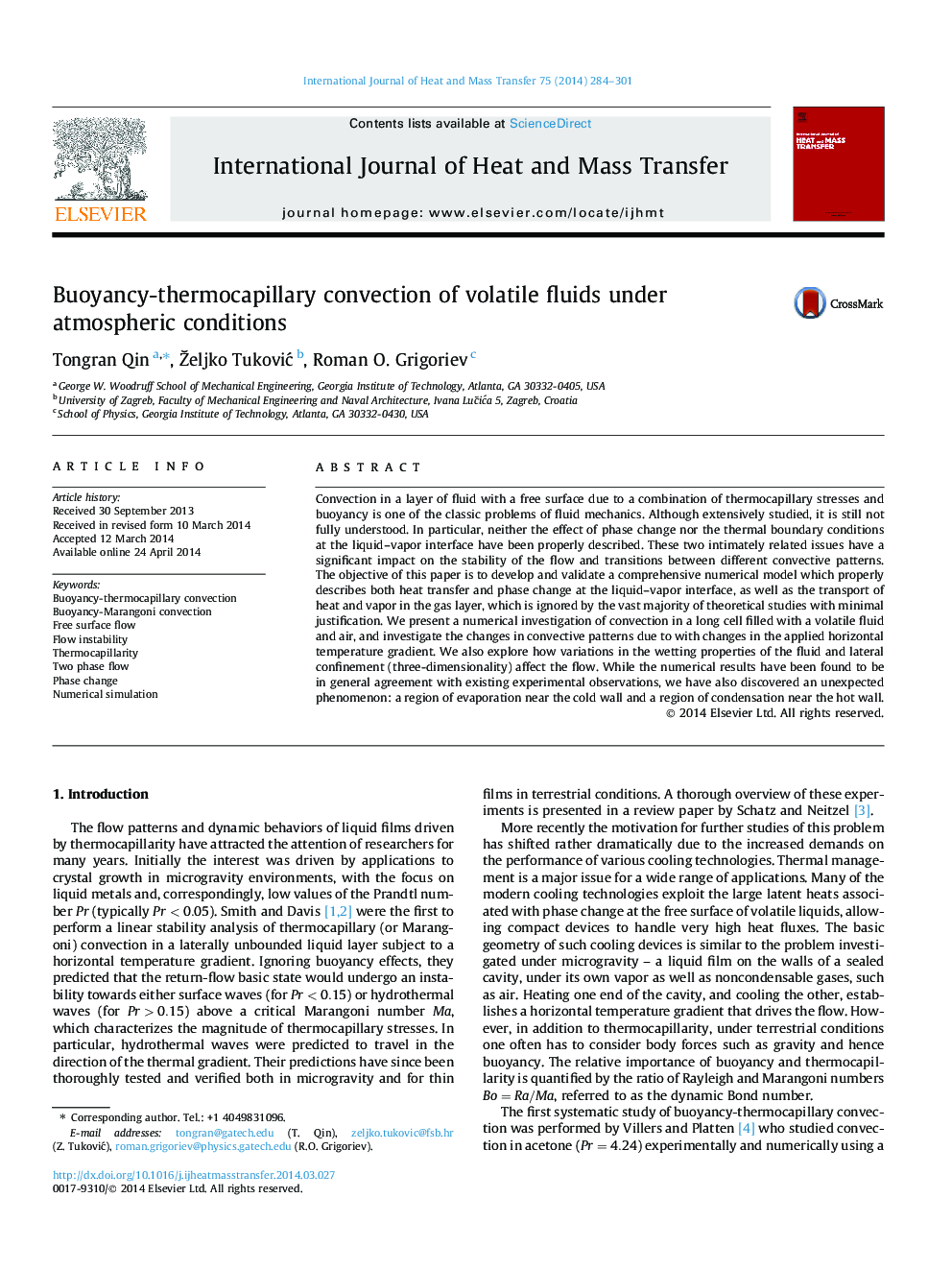| Article ID | Journal | Published Year | Pages | File Type |
|---|---|---|---|---|
| 7056955 | International Journal of Heat and Mass Transfer | 2014 | 18 Pages |
Abstract
Convection in a layer of fluid with a free surface due to a combination of thermocapillary stresses and buoyancy is one of the classic problems of fluid mechanics. Although extensively studied, it is still not fully understood. In particular, neither the effect of phase change nor the thermal boundary conditions at the liquid-vapor interface have been properly described. These two intimately related issues have a significant impact on the stability of the flow and transitions between different convective patterns. The objective of this paper is to develop and validate a comprehensive numerical model which properly describes both heat transfer and phase change at the liquid-vapor interface, as well as the transport of heat and vapor in the gas layer, which is ignored by the vast majority of theoretical studies with minimal justification. We present a numerical investigation of convection in a long cell filled with a volatile fluid and air, and investigate the changes in convective patterns due to with changes in the applied horizontal temperature gradient. We also explore how variations in the wetting properties of the fluid and lateral confinement (three-dimensionality) affect the flow. While the numerical results have been found to be in general agreement with existing experimental observations, we have also discovered an unexpected phenomenon: a region of evaporation near the cold wall and a region of condensation near the hot wall.
Keywords
Related Topics
Physical Sciences and Engineering
Chemical Engineering
Fluid Flow and Transfer Processes
Authors
Tongran Qin, ZÌeljko TukoviÄ, Roman O. Grigoriev,
